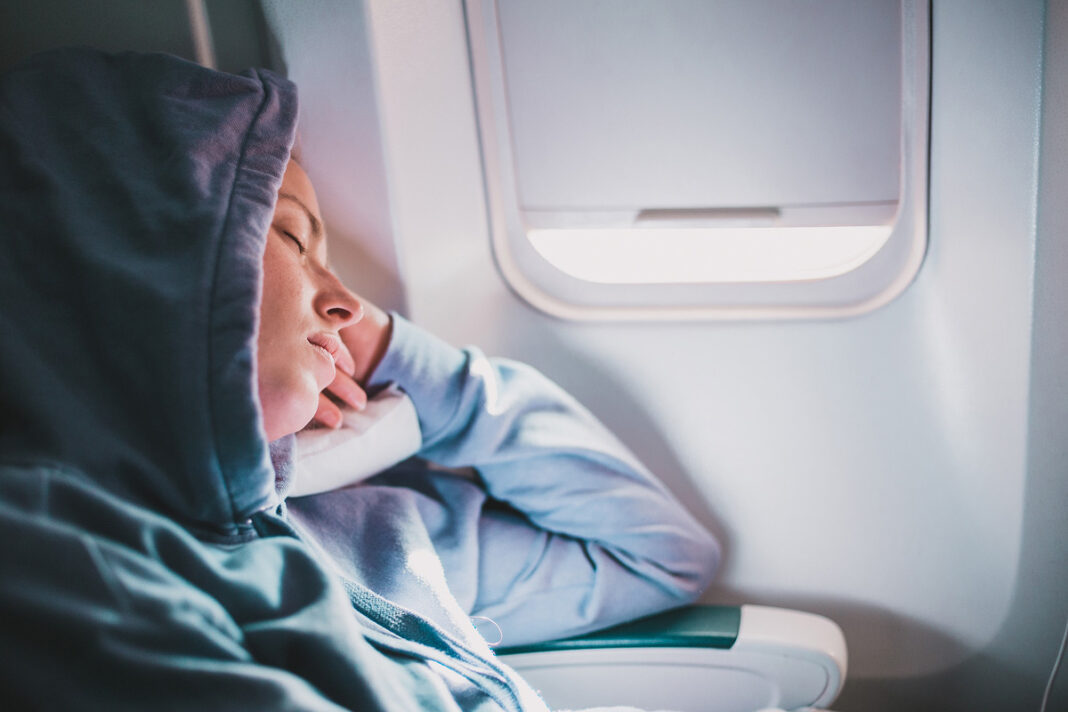Jet lag brings foggy mornings, restless nights, and that dazed feeling where the body just can’t catch up. It can be a silent travel companion that doesn’t knock before entering. The problem occurs when a person crosses time zones, and the body’s internal clock falls out of sync with the local time. While jet lag is common after long-distance travel, a few tips can help reduce its effects quickly and make one more comfortable.
Adjust the Schedule
When preparing for a long flight abroad, one should begin adjusting their schedule a few days before departure. Setting one’s bedtime and wake-up time as per the destination country’s local time zone can reduce the effects of jet lag. A schedule change, even as small as 30 minutes, gives the body a much-needed head start. The gradual shift eases the body into the new time zone without causing major harmful effects.
Pick a Smart Arrival Time
Another way to avoid jet lag on long international flights is to choose airlines that land in the destination country during the day, preferably in the morning. Daylight makes a big difference. It tells the brain that it’s time to be awake, which can help kick jet lag out the door faster and easier. People who land during the night may find the task harder to accomplish. Night landings can lead to oversleeping or waking up in the middle of the night. Daytime arrivals give the body a chance to stay active and ease into the new rhythm naturally.
Drink Water Often During the Flight
The dry air inside a plane can suck out the moisture from the body and cause people to feel drained as the journey progresses. This exhaustion can cause travelers to fall under the spell of jet lag. If left unattended, the fatigue, headaches, and irritability that often accompany jet lag can worsen. Hydrating during the flight can prevent these effects. One can drink small glasses of water periodically to help the body. While doing this, one should also limit caffeine and other foods and drinks that cause the body to lose water. It is a simple yet effective jet lag prevention tip for long flights.
Move Around in the Cabin
International flights involve long hours of sitting, which slows down circulation and makes muscles stiff. Getting up every few hours and taking short walks down the aisle keeps blood flowing and energy levels steady. If walking in the cabin is not permitted, one can at least stretch in the seat. Light exercises or movements like ankle circles and shoulder rolls can be done when seated. Although small, these movements relax the body. People wondering how to manage jet lag on long-haul flights should definitely give them a try.
Spend Time in Natural Light After Landing
Soon after landing, one must try to get to an airport area that has natural light. Natural light exposure helps reset the body’s internal clock, making it one of the most useful jet lag remedies for frequent travelers. After exiting the airport, if time permits, one can also head to a cafe that has some sun exposure, where one can refuel and plan the rest of the day. If one feels sleepy on landing during the day, a cup of coffee will make avoiding the bed easier. Instead of going straight to sleep, one should stay awake until a normal bedtime in the new time zone. This first day will be detrimental to setting the tone for the rest of the trip.
Eat Meals at Local Times
Eating meals according to the local time schedule is another strategy to avoid jet lag. Aside from sunlight, adjusting meal timings can play a functional role in helping the body settle in. Eating breakfast, lunch, and dinner at local hours can help anchor the system to the new time zone. At first, it might be difficult to avoid the urge to eat or snack according to the schedule of one’s home country. But overlooking that urge is important. One might need to stay hungry occasionally to adjust to this new eating schedule, but it is well worth it.
Keep the First Day Light and Easy
One should let the body and mind rest on the first day after arriving in the new country. They are both busy adjusting to the new time zone, and packing many activities into the schedule will not help. One should avoid setting up multiple visits and meetings or making too many sightseeing plans. Instead, it’s advisable to check into the hotel, take a walk, or have a leisurely stroll in the neighborhood. Gentle movement helps shake off stiffness from the flight and keeps sleepiness at bay. A spa visit or massage are also excellent options to settle in.
Have a Comfortable Sleeping Environment
Good sleep on the first night is a big win. Ensuring the hotel room is quiet and dark is a great way to fall asleep quickly. One can use the blackout curtains to cancel out any light that might affect sleep. It’s also important to turn off electronics and set the thermostat to a comfortable temperature. If street noise is a problem, one can try using earplugs or turning on a fan. A good night’s sleep is necessary for recovering from jet lag fast.


